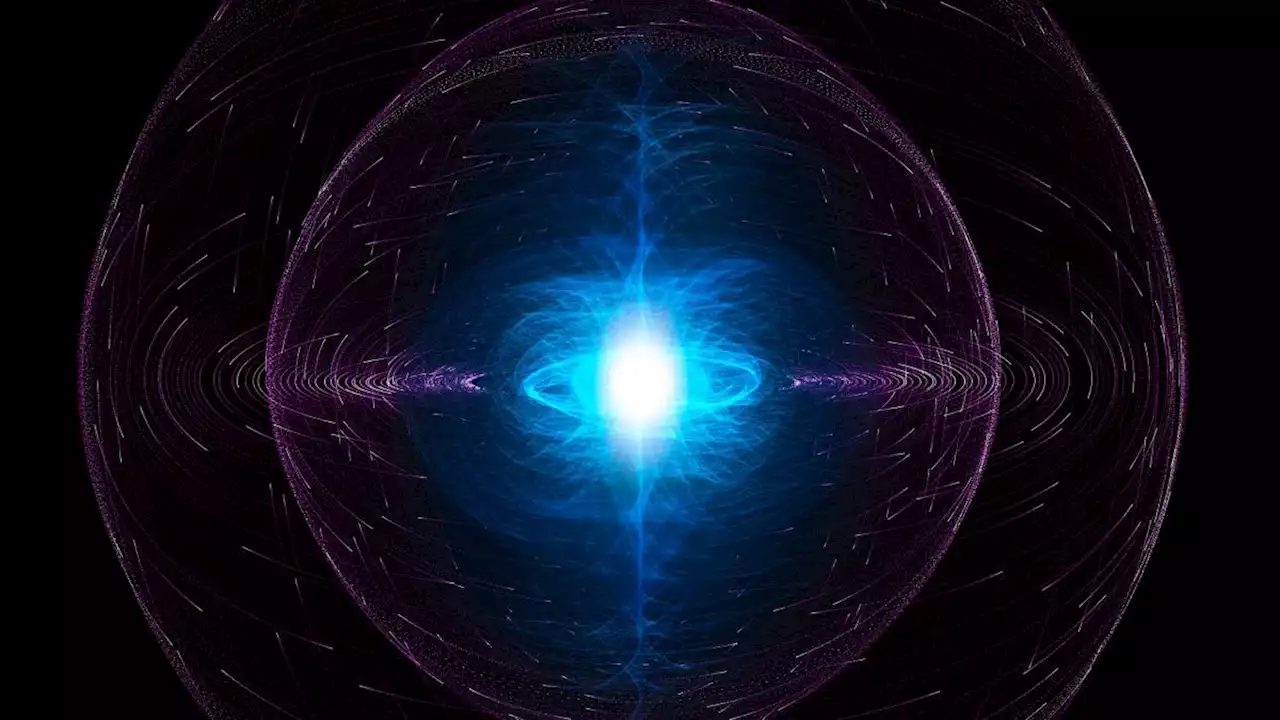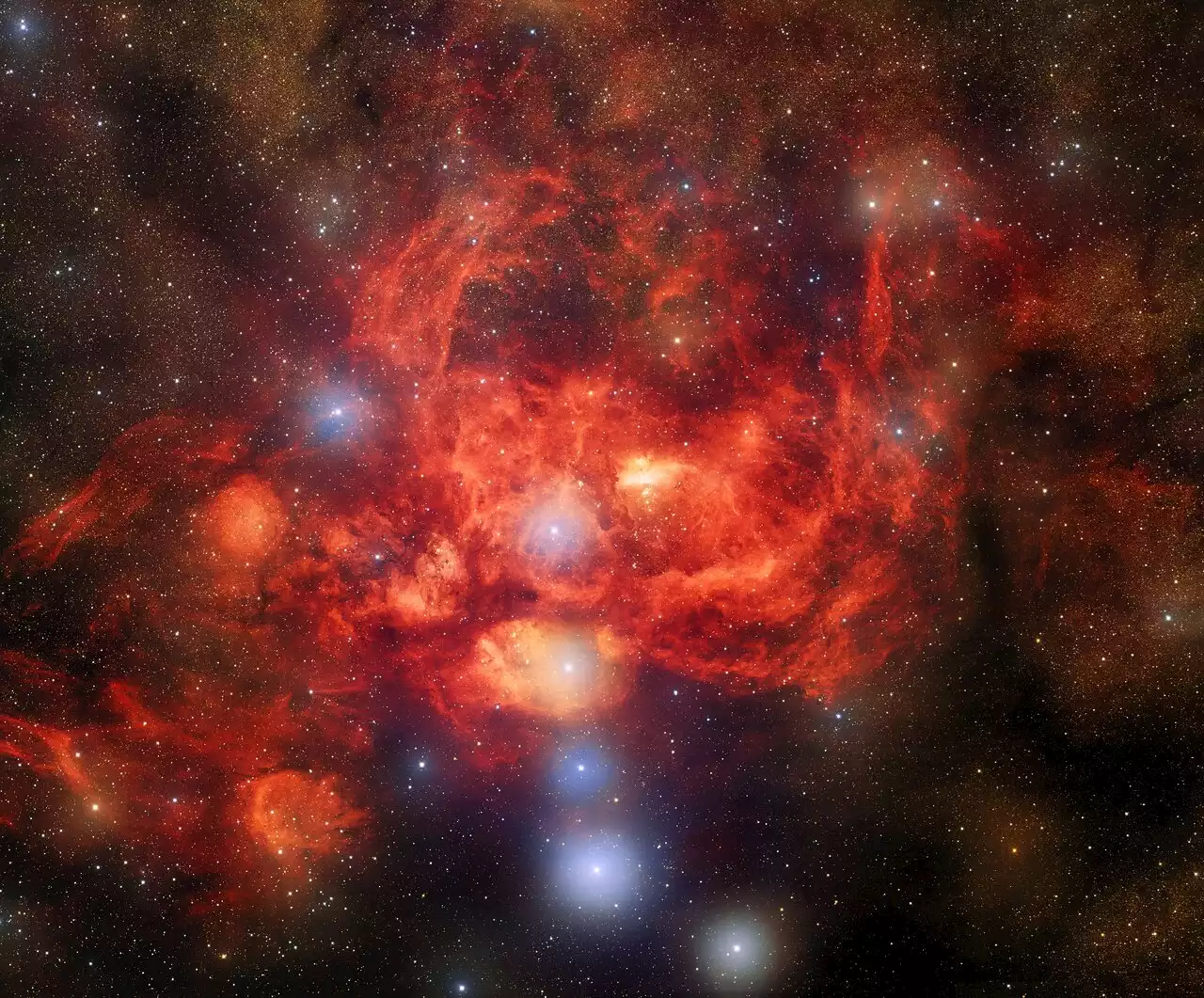This instrument was originally designed for a survey into dark energy, but now it's taking beautiful images of space.
One of the biggest mysteries in cosmology today is what exactly the universe is made up of. We know that all of the ordinary matter in the universe makes up just 5% of the total universe, with the rest being made up of theoretical constructs: 27% of the universe is dark matter, and 68% is dark energy. We know that dark matter and dark energy must exist because we see their effects, but neither has ever been measured directly.
So to learn more about dark energy, an international large-scale survey called the Dark Energy Survey was launched to map out hundreds of millions of galaxies. Between 2013 and 2019 a collaboration of researchers used a purpose-built tool called the Dark Energy Camera on the Victor M. Blanco Telescope located in the Chilean Andes for these observations.
This 400-light-year-wide nebula is located around 8,000 light-years away from Earth in the constellation of Scorpius. This cloud of dust and gas is illuminated by bright, young stars, with a particularly bright set of massive stars in a cluster called Pismis 24 in the heart of the nebula.
Capturing these different features was possible thanks to the Dark Energy Camera’s range of filters. “This image was constructed using some of a new range of very special DECam narrowband filters, which isolate very specific wavelengths of light,” NOIRLab explains.
United States Latest News, United States Headlines
Similar News:You can also read news stories similar to this one that we have collected from other news sources.
 Pearl review: a star is born (and is very, very bloody) | Digital TrendsDirector Ti West's new X prequel, Pearl, is a lurid and colorful horror movie unlike any other you'll see this year. It hits theaters on September 16.
Pearl review: a star is born (and is very, very bloody) | Digital TrendsDirector Ti West's new X prequel, Pearl, is a lurid and colorful horror movie unlike any other you'll see this year. It hits theaters on September 16.
Read more »
 Never-before-seen 'strange quark star' may have formed after cosmic collision, physicists sayPaul M. Sutter is a research professor in astrophysics at SUNY Stony Brook University and the Flatiron Institute in New York City. He regularly appears on TV and podcasts, including 'Ask a Spaceman.' He is the author of two books, 'Your Place in the Universe' and 'How to Die in Space,' and is a regular contributor to Space.com, Live Science, and more. Paul received his PhD in Physics from the University of Illinois at Urbana-Champaign in 2011, and spent three years at the Paris Institute of Astrophysics, followed by a research fellowship in Trieste, Italy.
Never-before-seen 'strange quark star' may have formed after cosmic collision, physicists sayPaul M. Sutter is a research professor in astrophysics at SUNY Stony Brook University and the Flatiron Institute in New York City. He regularly appears on TV and podcasts, including 'Ask a Spaceman.' He is the author of two books, 'Your Place in the Universe' and 'How to Die in Space,' and is a regular contributor to Space.com, Live Science, and more. Paul received his PhD in Physics from the University of Illinois at Urbana-Champaign in 2011, and spent three years at the Paris Institute of Astrophysics, followed by a research fellowship in Trieste, Italy.
Read more »
 Lisa Calls Blinks’ Excitement Over ‘BORN PINK’ One of Her ‘Biggest Motivations’: Exclusive“I think our fans are as excited about our new album as we are,” BLACKPINK's Lisa tells CRFashionBook in its new issue, which Billboard has the first look at.
Lisa Calls Blinks’ Excitement Over ‘BORN PINK’ One of Her ‘Biggest Motivations’: Exclusive“I think our fans are as excited about our new album as we are,” BLACKPINK's Lisa tells CRFashionBook in its new issue, which Billboard has the first look at.
Read more »
 WSJ News Exclusive | Justice Department Forms National Network of Prosecutors Focused on Crypto CrimeThe Justice Department has tapped more than 150 federal prosecutors nationwide to bolster law enforcement’s efforts to combat the rise in crime linked to the use of cryptocurrencies
WSJ News Exclusive | Justice Department Forms National Network of Prosecutors Focused on Crypto CrimeThe Justice Department has tapped more than 150 federal prosecutors nationwide to bolster law enforcement’s efforts to combat the rise in crime linked to the use of cryptocurrencies
Read more »
 See How They Run's cast on the art of the murder mystery | Digital TrendsIn an interview with Digital Trends, the cast and crew of See How They Run talk how their film honors the English murder mystery genre.
See How They Run's cast on the art of the murder mystery | Digital TrendsIn an interview with Digital Trends, the cast and crew of See How They Run talk how their film honors the English murder mystery genre.
Read more »
 Speak No Evil director on his horror film about being too nice | Digital TrendsIn an interview with Digital Trends, director Christian Tafdrup talks about his new Shudder horror film SpeakNoEvil.
Speak No Evil director on his horror film about being too nice | Digital TrendsIn an interview with Digital Trends, director Christian Tafdrup talks about his new Shudder horror film SpeakNoEvil.
Read more »
